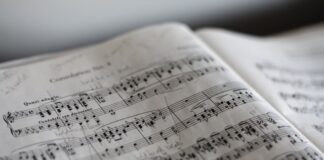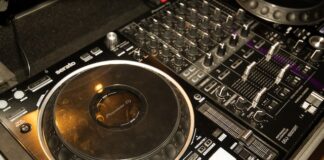Music has been an essential part of human life since ancient times. It is a universal language that brings people together and transcends cultural boundaries. From the earliest forms of music, people have developed and refined a variety of musical instruments. These instruments have played an integral role in the development of music, and each has its own unique history. In this article, we will explore the history of musical instruments, from prehistoric times to modern day.
Prehistoric Times: The Origins of Music
The history of musical instruments begins in prehistoric times. Archaeologists have found evidence of musical instruments dating back to the Paleolithic era, more than 40,000 years ago. These instruments were made from natural materials such as bone, ivory, and wood. They were simple in design but played an important role in early human societies. Archaeologists have found flutes, drums, and stringed instruments that were used for both ritual and entertainment purposes.
Ancient Times: The Birth of Musical Traditions
As civilizations developed, so did the music and musical instruments they used. The ancient Egyptians, Greeks, and Romans all had their own unique musical traditions and instruments. The ancient Egyptians used harps, flutes, and drums in their music, while the Greeks developed instruments such as the lyre, a stringed instrument played with a plectrum. The Romans favored the trumpet and the lute, a plucked stringed instrument.
Middle Ages: The Rise of the Church
During the Middle Ages, music was closely tied to the Christian Church. The Church played an important role in the development of Western music, and many of the musical instruments used during this time were designed for use in religious ceremonies. The pipe organ, for example, was developed during the Middle Ages and became an integral part of Christian worship.
Renaissance: A Time of Innovation
The Renaissance was a time of great innovation in music and musical instruments. This was the era when many of the instruments we know today were developed. The violin, for example, was developed in Italy during the Renaissance, and quickly became a popular instrument throughout Europe. Other instruments developed during this time include the harpsichord, the lute, and the trumpet.
Baroque: Ornamentation and Complexity
The Baroque era was characterized by ornate and complex music, and this complexity was reflected in the musical instruments of the time. The harpsichord, for example, was a popular instrument during the Baroque era and was used to create intricate and ornate melodies. The Baroque period also saw the development of the clarinet, a woodwind instrument that quickly became a staple of orchestral music.
Classical: A Focus on Symmetry and Balance
The Classical period was a time of great musical innovation, and the musical instruments of the time reflected this focus on symmetry and balance. The piano, for example, was developed during the Classical era and quickly became one of the most popular instruments in the world. Other instruments developed during this time include the flute and the clarinet.
Romantic: Emotion and Expression
The Romantic era was characterized by a focus on emotion and expression, and this was reflected in the music and musical instruments of the time. The piano remained a popular instrument during the Romantic era, but it was joined by other instruments such as the saxophone and the French horn.
Modern Day: New Technologies and Innovations
In the modern era, new technologies and innovations have led to the development of a wide range of new musical instruments. Electronic instruments such as synthesizers and drum machines have become increasingly popular, and new materials and manufacturing techniques have led to the development of new acoustic instruments such as carbon fiber violins.
FAQs
- When was the first musical instrument invented?
The first musical instruments were likely developed in prehistoric times, more than 40,000 years ago. Archaeologists have found evidence of flutes made from bone, ivory, and wood that date back to the Paleolithic era.
- What is the most popular musical instrument in the world?
The piano is one of the most popular musical instruments in the world. It is versatile and can be used in a wide range of musical genres, from classical to jazz and pop.
- What is the oldest surviving musical instrument?
The oldest surviving musical instrument is the Divje Babe flute, which was discovered in a cave in Slovenia in 1995. It is estimated to be more than 40,000 years old.
- What is the difference between a woodwind and a brass instrument?
The main difference between a woodwind and a brass instrument is the material they are made from. Woodwind instruments, such as the flute and clarinet, are made from wood or metal, while brass instruments, such as the trumpet and trombone, are made from brass.
- How have musical instruments influenced music throughout history?
Musical instruments have played a significant role in the development of music throughout history. They have allowed musicians to create new sounds and explore new musical ideas, leading to the creation of new musical genres and styles.
Conclusion
The history of musical instruments is a fascinating and complex one, spanning thousands of years of human history. From the simple bone flutes of prehistoric times to the complex electronic instruments of today, musical instruments have played an integral role in the development of music and human culture. By understanding the history of musical instruments, we can gain a deeper appreciation for the role they have played in shaping our world. So, whether you are a musician or simply a lover of music, take a moment to appreciate the rich history and diversity of musical instruments. And who knows, perhaps you will be inspired to pick up an instrument of your own and create something beautiful.
Source: http://www.wholekitchen.info/









